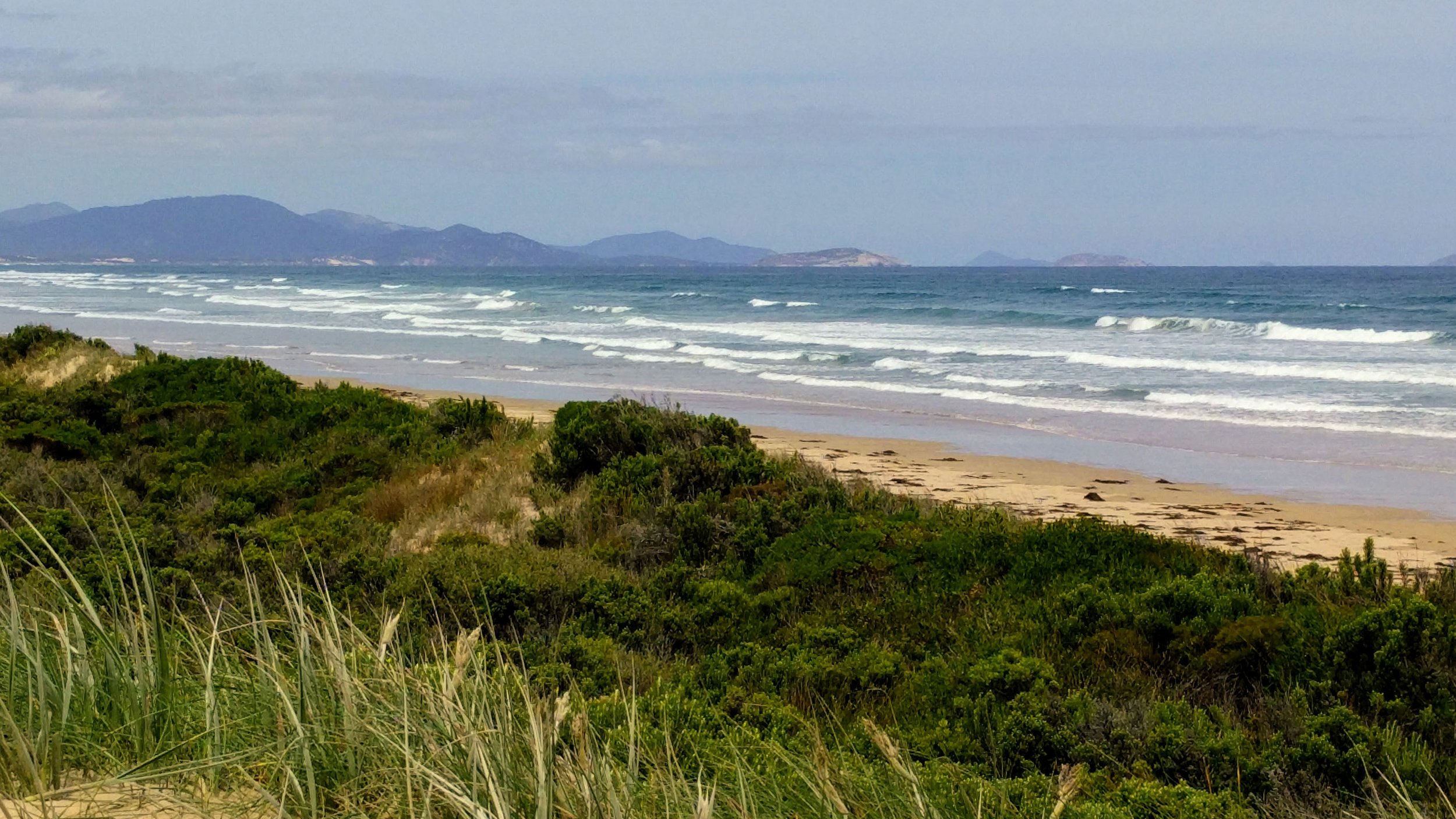
Sandy Point Traditional Owners
We acknowledge the Traditional Custodians of this land, and pay our respect to Elders past, present and emerging.
The Indigenous custodians of the Waratah Bay area and Native Title
Archaeological findings show that for many thousands of years Indigenous peoples thrived in this area fishing the Inlets, hunting on the coastal plains, and gathering seasonally abundant food. However, in the early 19th Century, this traditional way of life was interrupted by the appearance of sealers and whalers along the coastline. Their arrival led to conflict as the First Peoples defended their land and waters from the invaders.
The resulting dispossession, and the impact of diseases introduced by white colonisers, impacted their lives greatly. One poignant account of the treatment of Aboriginal peoples can be found here: https://www.basscoastpost.com/frank-coldebella/the-blacks-are-very-quiet-here-now.
By the 1860s, the remaining Indigenous population was forcibly moved from South Gippsland to Ramahyuck Mission Station, near Lake Wellington, where they were forbidden to speak in language or practise their cultural lore. They were later transferred to the Lake Tyers Mission Station, which was closed in 1970.
Native Title Policy has been able to provide some redress through recognition of rights of the indigenous peoples and original custodians of the land and 75% of Victoria has been successfully claimed. The Waratah Bay and Wilson Promontory area remain for now a part of the remaining 25%.
Native title is the legal recognition of the individual or communal rights and interests which Aboriginal people have in land and water where Aboriginal people have continued to exercise their rights and interests in accordance with traditional law and custom since before the British asserted sovereignty over Australia.
For native title rights and interests to be formally recognised under the Native Title Act (1993) Cth (the “Act”), it must be established that:
The native title claim group have rights and interests that are possessed under traditional laws acknowledged and traditional customs observed;
The native title claim group by those laws and customs, have a connection with the land or water; and
That those rights and interests are capable of being recognised by Australian law.
Under the Act, Native title can only be claimed in areas where is has not been extinguished, even if Aboriginal people still have a traditional connection to that land or water. These areas include vacant Crown land; National Parks; State Forests; Crown reserves; inland waters and the sea. Under the Act, native title rights and interests, if recognised, must co-exist with any interests other people have in the same land and water.
Native title is a communal title, and any determination that native title exists includes all the Aboriginal people who have interests in the relevant land or water. The native title claim group must be united, or bound together, by their system of traditional law and custom and must formally authorise the application.
Both the Gunaikurnai and Bunurong have claimed native title over the Waratah Bay and Wilson’s Promontory area. The Bunurong Land Council Aboriginal Corporation made a successful application for native title recognition of their traditional lands and waters are situated generally in the coastal district of Melbourne and the southeast coast of Victoria.
The Bunurong Land Council (BLCAC) serves as the Traditional Owner organization representing the Bunurong people of the South-Eastern Kulin Nation. The Bunurong people are now formally recognized as the Traditional Owners of lands and waters across greater Melbourne, Mornington Peninsula, and the Bass Coast. They also claim Wilsons promontory and Waratah Bay as their traditional lands.
The Gunaikurnai people are acknowledged formally as the Traditional Owners of a significant area in Gippsland, spanning from Warragul in the west to the Snowy River in the east, and from the Great Divide in the north to the coast in the south, covering approximately 10% of the state. The Gunaikurnai Land & Waters Aboriginal Corporation the Registered Aboriginal Party for the Gunaikurnai. The Brataualung People represent one of the five clans of the Gunaikurnai people who occupied the area of South Gippsland, stretching from Cape Liptrap and Tarwin Meadows to the mouth of Merriman Creek, and inland to near Mirboo, Port Albert, and Wilsons Promontory.
Notwithstanding that Native Title over the Waratah Bay and Wilsons Promontory area is yet to be formally established, the traditional custodians are recognised and acknowledged by Federal and State Government Departments, Local Government and by most community groups:
Parks Victoria (Wilsons Promontory)
We acknowledge the Bunurong and GurnaiKurnai people as the Traditional Custodians of South Gippsland and pay respect to their Elders, past, present, and future, for they hold the memories, traditions culture and hopes of Aboriginal and Torres Strait Islander people of Australia.
South Gippsland Shire
We acknowledge the Gunaikurnai and the Bunurong as the First Australians and Traditional Custodians of this land, and pay our respect to Elders past, present and emerging.
Fig 1: The Bunurong Land Council Aboriginal Corporation Native Title Map
Fig 2: The Gurnai-Kurnai Aboriginal Land and Waters Council Native Title Map
Also see:
The Archaeology of Wilson's Prom by PJF Coutts
Home | History of Sandy Point | Traditional Owners | European Settlers | Settlement at Shallow Inlet | Early Settler Life | Township of Sandy Point


